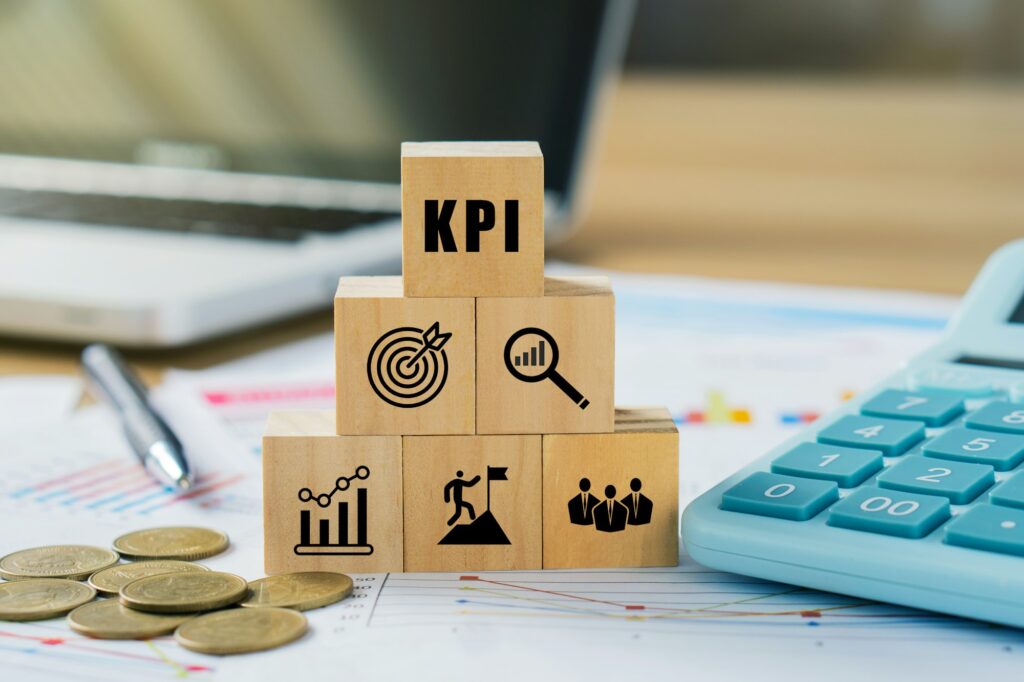
In the era of digital transformation, managing remote employees has become a crucial skill for modern leaders. Transitioning from the traditional office environment to a fully virtual workspace poses its own set of unique challenges, but with the right strategies in place, you can ensure your team stays productive and engaged regardless of their location.
Whether you’re a seasoned manager or new to the remote management landscape, understanding best practices is key to thriving in this dynamic environment.
“The secret to managing remote teams effectively lies in clear communication, trust, and the right tools. When you get these right, the rest falls into place.”
In this article, we’ll explore some of the best practices for managing remote employee performance.

Managing remote employee performance requires a reimagined approach to traditional performance management methods. Unlike in-office settings, remote work often presents unique challenges such as managing productivity, reinforcing company culture, and fostering effective communication.
However, with the right strategies, you can turn these challenges into opportunities for success.
Begin by focusing on clear, outcome-based communication. Regular check-ins and meetings should be set up to ensure alignment on goals and expectations.
Use these touchpoints not just for performance reviews but also for understanding any obstacles your team members might be facing. This creates a supportive environment where employees feel heard and valued.
Another key aspect is implementing performance metrics and Key Performance Indicators (KPIs) that are specific to remote work. These metrics should emphasize outcomes and achievements over micromanagement. Tracking progress through established KPIs allows both you and your employees to have a transparent understanding of what success looks like.
Additionally, leveraging technology can simplify performance tracking significantly. Tools such as project management software, time-tracking apps, and collaboration platforms can provide valuable insights into employee productivity and facilitate seamless communication. Remember, the goal is to use technology to bridge gaps, not to overload your team with unnecessary tools.
Finally, don’t overlook the importance of maintaining data security and privacy. Ensure that the tools and platforms used comply with industry standards to protect sensitive information. This builds trust and shows your team that you value their privacy and the integrity of their work.
By integrating these strategies, you can effectively manage the performance of your remote employees, driving both engagement and productivity. Implementing these best practices lays a strong foundation for a thriving remote workforce.
| Strategy | Description | Impact |
|---|---|---|
| Time Tracking Tools | Utilize software to monitor hours worked and activities. | Increases transparency and accountability. |
| Regular Check-ins | Schedule consistent meetings to discuss progress and challenges. | Enhances communication and addresses issues promptly. |
| Goal Setting | Define clear, measurable goals for employees. | Provides direction and motivates performance. |
| Performance Metrics | Establish key performance indicators (KPIs) relevant to roles. | Facilitates objective evaluation and feedback. |
| Continuous Feedback | Provide ongoing constructive feedback and recognition. | Keeps employees engaged and motivated. |

Establishing effective communication channels is the cornerstone of managing remote employee performance. Utilize a blend of communication tools such as email, chat applications, and video conferencing to bridge the physical distance between you and your team.
Regular check-ins, both formal and informal, can help keep everyone aligned and informed. For instance, a quick daily stand-up meeting via a project management app can ensure everyone’s on the same page.
Overcommunication can sometimes be a good thing. Keep your team updated not only on project progress but also on any company changes. This transparency can build trust and foster a sense of belonging among remote employees. Imagine receiving regular updates on company goals and knowing exactly where you stand – it can be incredibly motivating, right?
Frequent feedback is a priceless tool in this setting. Create an environment where feedback flows both ways. When employees know they can share their thoughts openly, it enhances trust and leads to more productive conversations. If someone feels overwhelmed by their workload, being able to openly discuss it without fear of judgment can lead to immediate solutions.
Implement an open-door policy, even in a virtual framework. This could mean being accessible via chat during certain hours or having dedicated times for video calls.
The key is to ensure your team feels they can approach you easily and without hesitation. Occasional video meetings can also add a personal touch, making interactions more meaningful and effective.
Create communication guidelines that uphold your company’s values and encourage regular contact among team members. This could be as simple as periodic emails or weekly team huddles, fostering a culture of dialogue and flexibility. By doing so, you not only maintain productivity but also nurture a thriving remote work environment.

When implementing performance metrics and key performance indicators (KPIs), it’s crucial to ensure they are both relevant and achievable. Start by identifying the specific goals you want your remote team to accomplish. Are you looking to enhance productivity, improve customer satisfaction, or perhaps drive innovative solutions?
Once your objectives are clear, the next step is to break them down into quantifiable metrics. For instance, instead of setting a vague goal like “increase customer satisfaction,” aim for something more concrete such as “achieve a customer satisfaction score of 90% or higher within the next quarter.” This specificity helps in tracking progress and making necessary adjustments.
Moreover, it’s essential to involve your team in the process of defining these metrics. Collaborative goal setting not only promotes buy-in but also ensures that everyone is on the same page regarding what’s expected. After all, a metric is only useful if it is well-understood and agreed upon by those who are working towards it.
Using the right tools and software can greatly facilitate the entire process. These systems can help in aggregating data, generating insightful reports, and even reminding team members of upcoming deadlines.
Many platforms also offer dashboards that present KPIs in a visual, easily understandable format, making it simpler to monitor and discuss performance during regular check-ins.
Lastly, regular review and feedback loops are vital. Monitor progress continuously and have frequent discussions to address any issues that may arise. Adjust the KPIs as needed based on the insights you gain over time. By staying flexible and responsive, you create an environment where continuous improvement is not just an objective but a culture.
Setting clear expectations and goals is the cornerstone of managing a remote team effectively. When your team knows what’s expected of them, they can better prioritize their work and stay focused on key objectives. Here’s how to do it well:
Remember, the more specific and detailed you are while setting goals and expectations, the less confusion and ambiguity there will be. This clarity will help your remote team members to confidently navigate their tasks and responsibilities, ultimately contributing to higher productivity and job satisfaction.
Gone are the days when physical presence was necessary for effective performance tracking. Today, technology lets you monitor team efficiency and productivity from anywhere.
Integrate a robust performance management tool into your workflow. These tools offer goal setting, real-time feedback, and automated performance reviews to streamline processes.
Project management tools like Asana, Trello, or Monday.com allow you to assign tasks, track progress, and collaborate. Their visual nature simplifies responsibilities and deadlines, giving you a bird’s-eye view of projects and bottlenecks.
Time tracking apps such as Toggl and Harvest offer insights into how employees spend their time, helping identify areas for efficiency improvements. Reporting features make it easier to analyze productivity data for informed decisions.
Meanwhile, collaboration platforms like Slack or Microsoft Teams maintain open communication lines. Integration with productivity tools enables file sharing and video conferencing in one place, fostering transparency and collaboration.
However, more technology doesn’t always mean better results. Choose tools that align with your team’s needs and complement workflows. Provide training to ensure everyone can maximize these tools.
In the end, a balanced approach to leveraging technology for performance tracking can empower your team to perform their best, whether working from home or across the globe.

When managing remote employees, ensuring data security and privacy is non-negotiable. First, establish clear rules and procedures to protect sensitive information. This means having well-documented policies your remote team can easily follow. Make sure these guidelines cover everything from password management to the proper handling of confidential documents.
Next, ensure your organization adheres to IT and cybersecurity standards. This could involve regular security training for your employees, keeping software up-to-date, and utilizing reliable antivirus programs. Encourage your team to report any suspicious activity immediately. This proactive approach helps prevent security breaches before they cause damage.
To avoid interruptions in workflow, some tasks might need to be completed in the office for security or efficiency. For instance, handling highly sensitive information might be better suited to a controlled office environment. It’s essential to communicate these exceptions clearly to your team to avoid any misunderstandings.
Finally, foster an atmosphere of open communication and accessibility. Establishing an open-door policy—even virtually—helps build trust and ensures any privacy concerns are addressed promptly. Remember, protecting your organization’s data is a shared responsibility. By keeping your remote team informed and proactive, you can maintain a secure and efficient work environment.
To manage a remote team effectively, you’ll need a toolkit that facilitates seamless communication and collaboration. Here are some essential tools:
Accountability in a remote work environment can be ensured by establishing clear expectations, using regular check-ins, and leveraging performance metrics. Consider implementing the following strategies:
Managing a remote team comes with unique challenges. Avoid these common mistakes to ensure your team stays productive and engaged:
Building trust with remote employees is crucial for a productive and cohesive team. Here are some tips to foster trust:
Regular check-ins with remote staff offer numerous benefits, including:
Mastering remote employee performance management is an ongoing journey that adapts and evolves with your team’s needs and the changing corporate environment. By focusing on clear communication, leveraging technology, and ensuring transparent and outcome-based evaluations, you create a framework that supports both business success and employee satisfaction.
Remember, remote work is here to stay, and its advantages — including better business outcomes, enhanced employee satisfaction, and stronger team retention — are too significant to overlook. Providing your team with the tools and trust they need fosters a resilient, collaborative, and high-performing remote workforce.
Consistency, openness, and flexibility are your allies in this endeavor. As you continue to refine your strategies, keep the bigger picture in mind: happy, engaged employees drive the company forward. Embrace the challenges and opportunities of remote work to create a thriving, future-proof organization.



